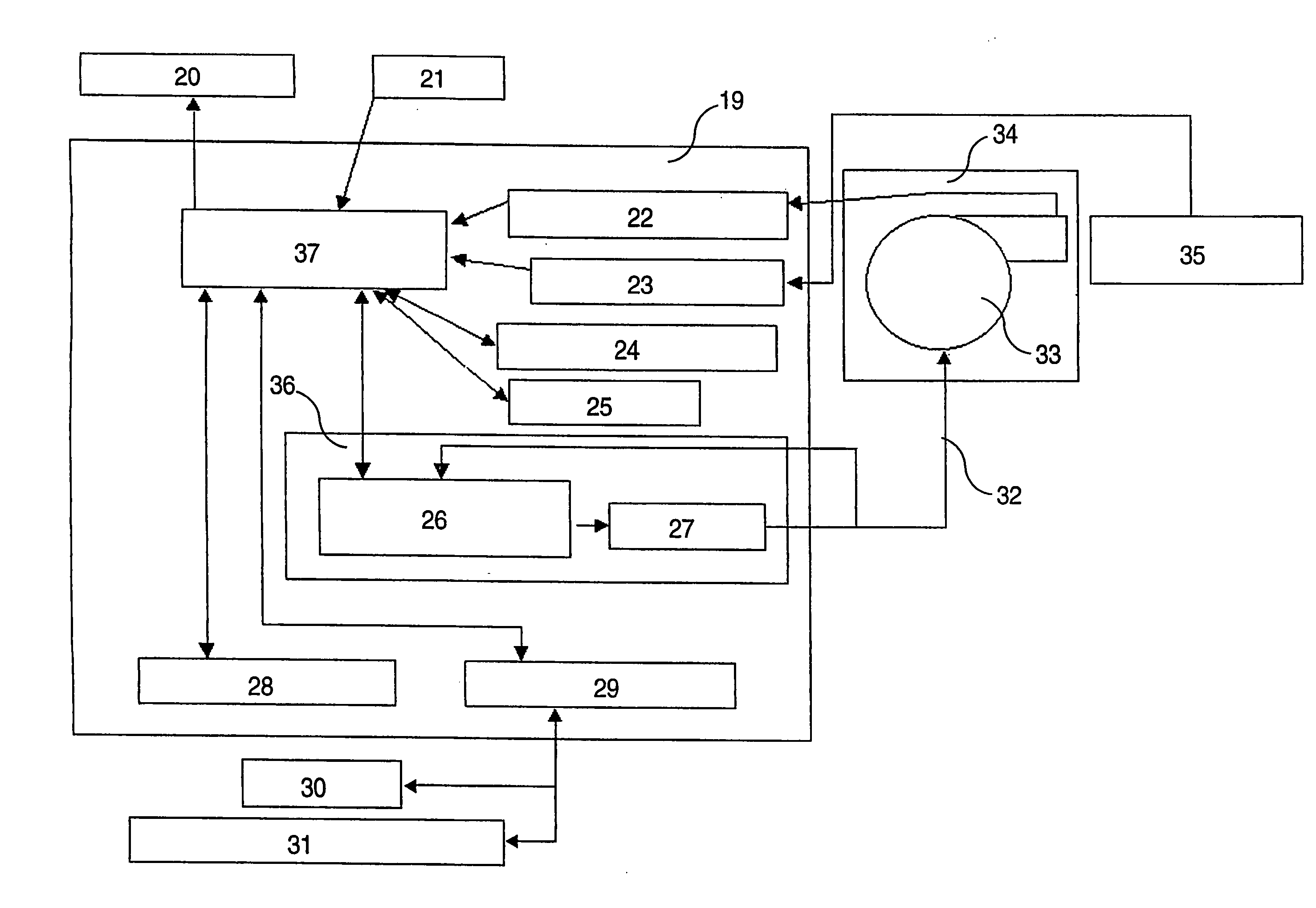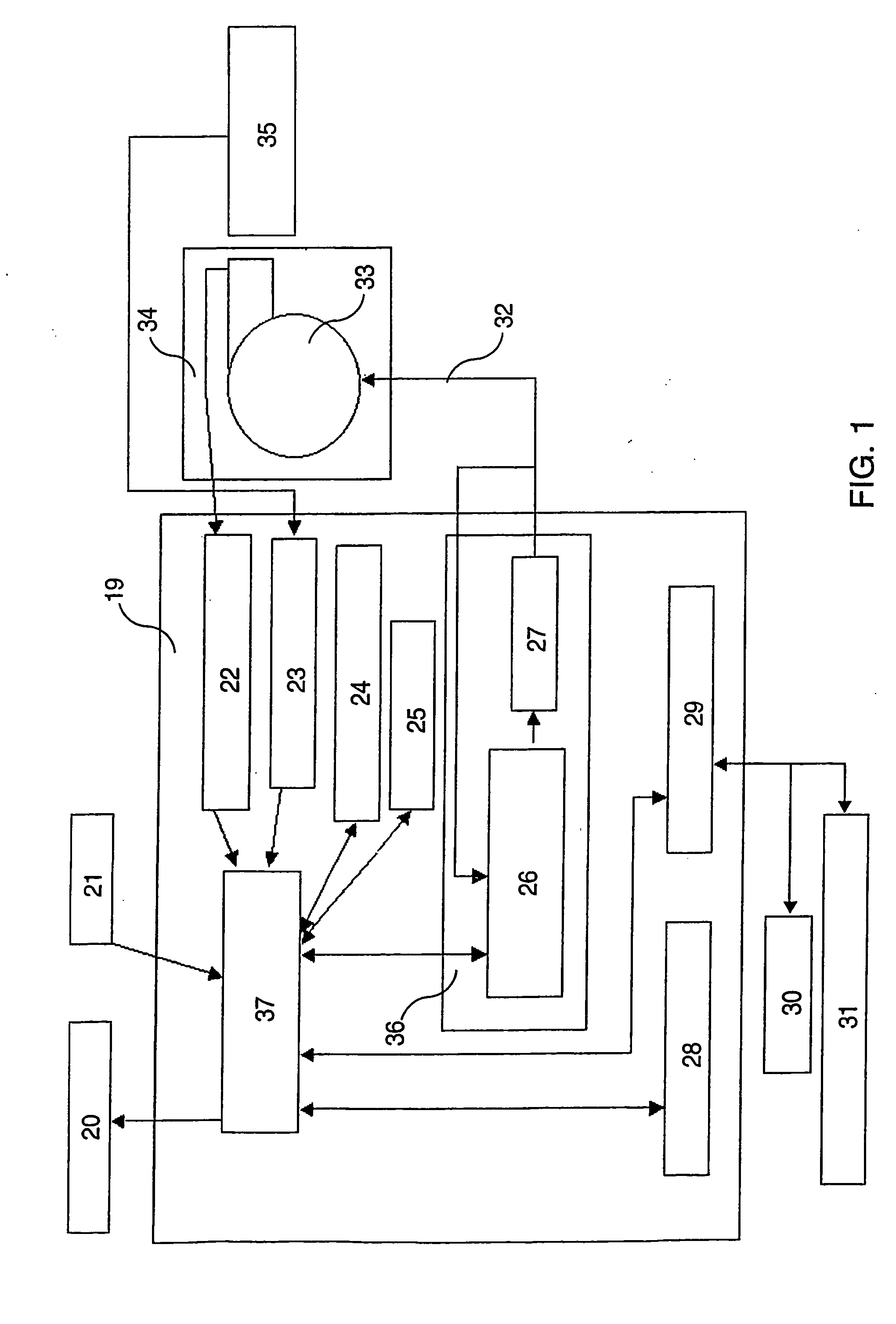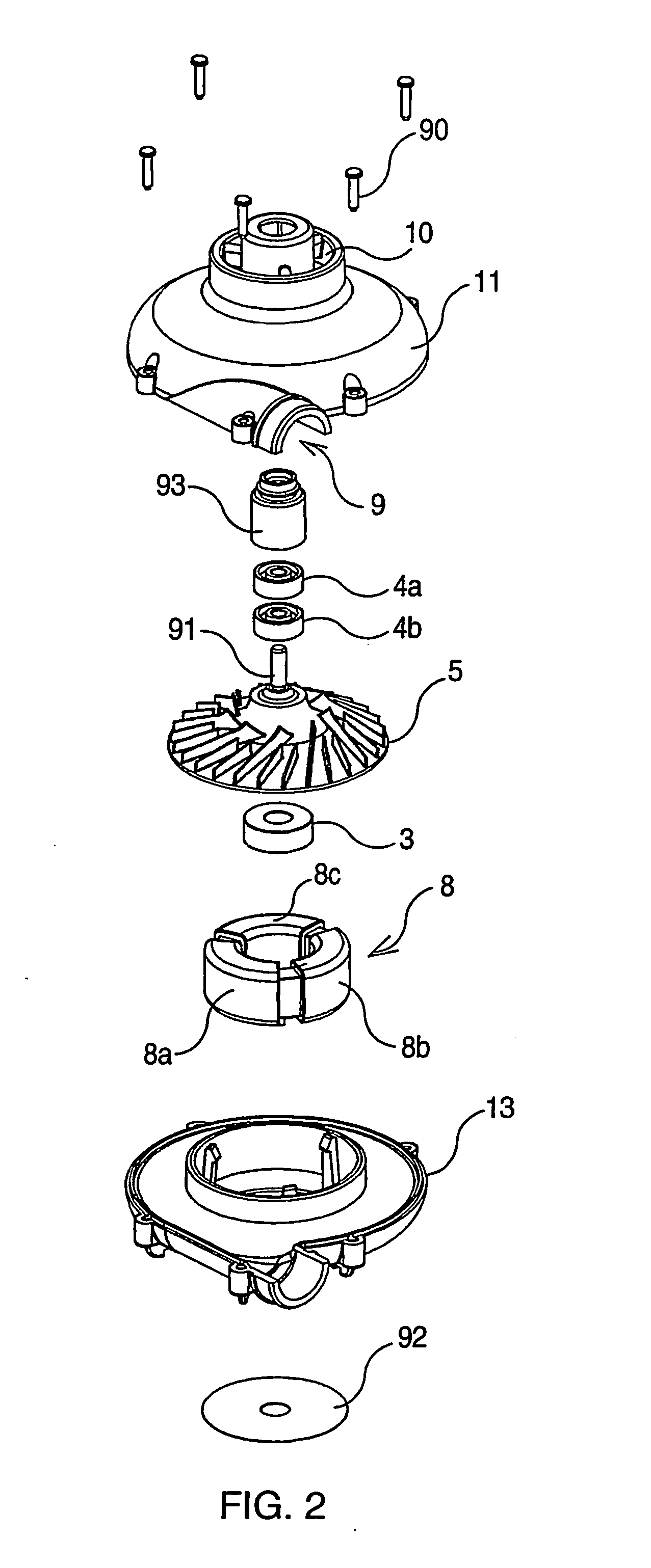Air assistance apparatus providing fast rise and fall of pressure within one patient's breath
a technology of air assistance and patient's breath, which is applied in the direction of magnetic circuit rotating parts, machines/engines, shape/form/construction, etc., can solve the problems of 10 khz bandwidth, inability to operate correctly at high speeds, and high cost of sensors, so as to achieve fast rise and fall, high rotation speed, and increase pressure
- Summary
- Abstract
- Description
- Claims
- Application Information
AI Technical Summary
Benefits of technology
Problems solved by technology
Method used
Image
Examples
example 1
Pressure Pm at Patient's Mask within a Breath
[0089] As represented in the FIG. 15 the pressure provided is not constant but is a function of time.
[0090] At time t1 the patient starts breathing in. Time t2 is defined when the absolute value of airflow starts to decrease within the inspiration phase or shows a fixed delay after t1. As the estimation module is calculating the derivative of the airflow function, it is able do determine this time for example when the derivative reaches zero. Time t3 is the start of expiration. Time t4 is defined when the absolute value of airflow starts to decrease within the expiration phase or shows a fixed delay after t3. Time t5 is the end of the breath step and the beginning of a next breath step.
[0091] In order to reduce the patient's lung effort the estimator increases the value of pressure PM from time t1 to t2. After time t2 as the absolute value of airflow is decreasing the estimation module decreases the pressure value. In the same way, to ...
example 2
Variations of the Average Pressure of Treatment as a Function Time According to Detected Events
[0097] In a preferential embodiment the average pressure of treatment within one breath, that is to say within one breathing step, can be modulated according to the events occurring, such as snoring or apneas or abnormal breathing patterns.
[0098] The apparatus will normally (no events detected)try to reduce the average pressure of treatment value, thus enhancing the patient comfort while breathing against the apparatus. The clinician set a minimum average pressure of treatment Ptmin and a coefficient NOEK expressed in hPa / s.
[0099] In the following example the terms AVP, are the average pressure of the pressure to patient's mask on one breath step. On FIG. 17, this average pressure as been noted PM, as the measurement is made on the first pressure sensor 6. As represented on FIG. 17, when no events are detected the average pressure of treatment value will follow the equation:
AVP(t)=MAX(...
example 3
Variations of the Slope SLH of the Value of Pressure PM Applied to the Patients Mask within a Breath
[0108] The slope coefficient of the pressure applied function of time within a breath can also be modulated according to time. In a preferential mode this coefficient remains constant on each single breath step (one inspiration and one expiration), but can be changed from one step to another.
[0109] The apparatus will try to reduce the slope coefficient SP, thus enhancing the patient comfort while breathing against the apparatus. The clinician set a minimum the slope coefficient SP, and a coefficient NSP expressed in hPa / s.
[0110] The events are detected the slope coefficient SP value will follow the equation :
SLH(t)=MAX(SLH(t−ε)−(NOES×ε),SLHmin)
ε being the sampling time, the MAX function is returning the greatest value of its two members.
[0111] The shape of the corresponding curve is like the one for average pressure in FIG. 17.
[0112] When an event is detected, a 3 steps process...
PUM
 Login to View More
Login to View More Abstract
Description
Claims
Application Information
 Login to View More
Login to View More - R&D
- Intellectual Property
- Life Sciences
- Materials
- Tech Scout
- Unparalleled Data Quality
- Higher Quality Content
- 60% Fewer Hallucinations
Browse by: Latest US Patents, China's latest patents, Technical Efficacy Thesaurus, Application Domain, Technology Topic, Popular Technical Reports.
© 2025 PatSnap. All rights reserved.Legal|Privacy policy|Modern Slavery Act Transparency Statement|Sitemap|About US| Contact US: help@patsnap.com



